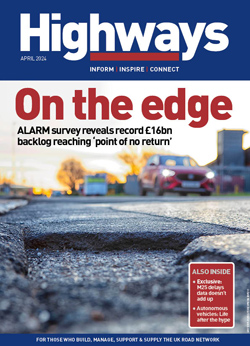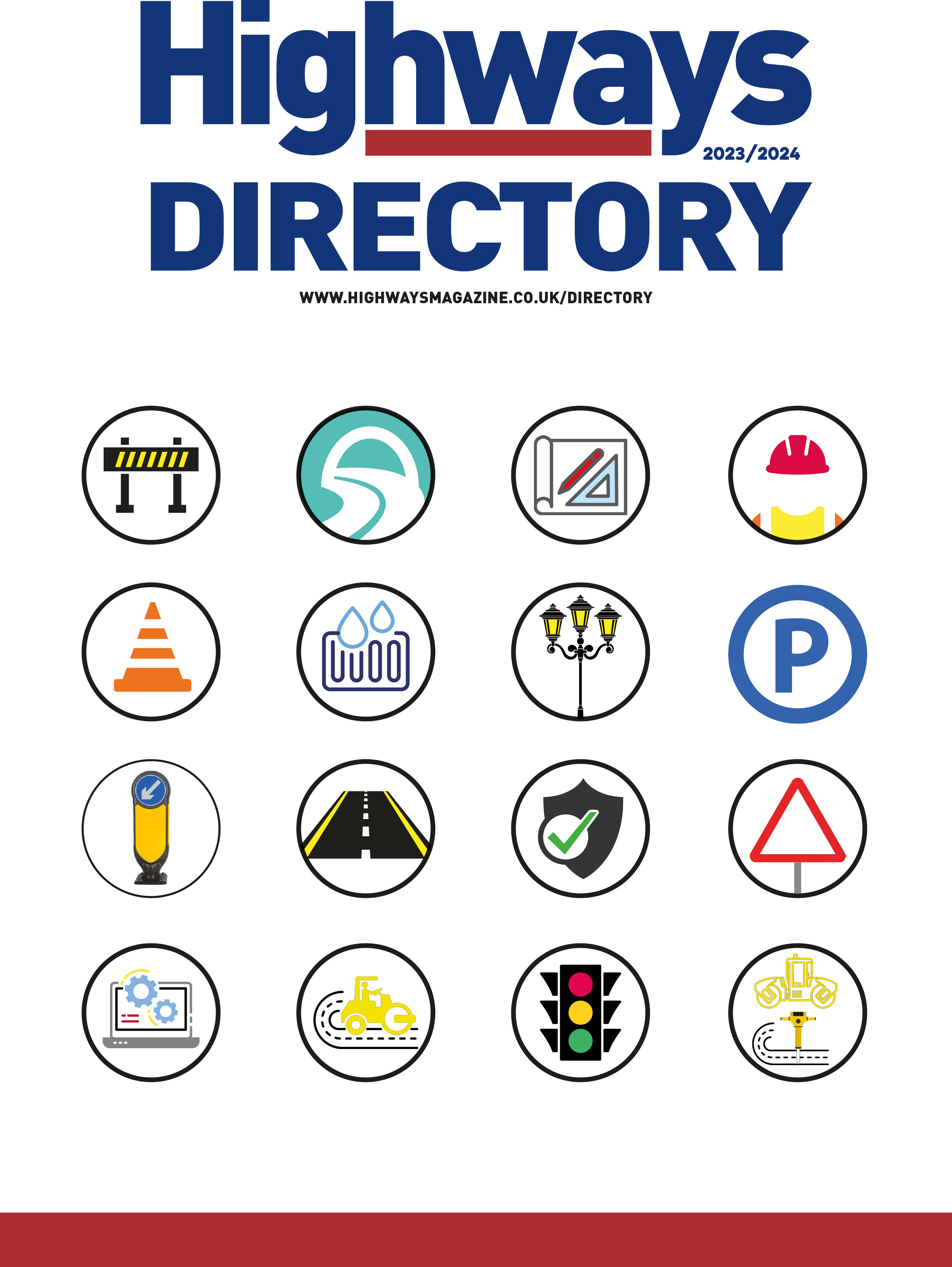The Government has outlined its plans for a Major Road Network (MRN) of local roads including proposals on funding and how the routes and schemes will be chosen.
The MRN will consist of the most strategic local routes in England and is in line for more than £1bn a year in dedicated funding from the planned National Roads Fund created by ringfencing vehicle excise duty (VED).
The framework to the MRN plans and process were outlined in a consultation launched in late December and ending on 19 March. Click here for an interactive map of an indicative MRN.
The Government will continue to engage with both local and regional bodies to support the finalisation of an MRN Programme to be launched in summer 2018.
Transport secretary, Chris Grayling, said: ‘We propose to create a Major Road Network, of approximately the same mileage as the network for which Highways England is responsible. We propose to create a specific new funding stream which will be dedicated to investing in this network and raising the performance standards which motorists experience on it.
‘The Government cannot deliver this programme in isolation; involving local and regional interests will ensure that the improvements are of most value to the economy.’
The delivery process
 Under the proposals, local highways authorities would retain their existing responsibilities and submit proposals for transformative schemes of between £20m and £50m – rising to a maximum of £100m in exceptional circumstances – to sub-national transport bodies or equivalent regional groups.
Under the proposals, local highways authorities would retain their existing responsibilities and submit proposals for transformative schemes of between £20m and £50m – rising to a maximum of £100m in exceptional circumstances – to sub-national transport bodies or equivalent regional groups.
These bodies would then select appropriate schemes to be developed under Regional Evidence Bases, which would then in turn be passed on to the transport secretary to allocate funds under a MRN Investment Programme.
The Investment Programme and the Regional Evidence Bases would be updated every two years, with the MRN itself reviewed every five years in line with the existing Road Investment Strategy cycle.
Once schemes are in the MRN Investment Programme it would fall to local authorities, in consultation with their region, to be responsible for their continued development.
DfT officials said: ‘The day-to-day maintenance of the MRN will remain the responsibility of individual highways authorities with separate funding through existing arrangements. It is a guiding principle of the MRN that local highways maintenance funding should not be adversely affected by the creation of the MRN.’
As a minimum, the DfT expects Regional Evidence Bases to comprise the following:
- An assessment of the overall condition of the existing network and its performance.
- The identification of network-wide issues and priority corridors
- Analysis of potential region-wide solutions and the development of specific interventions to tackle the issues identified over at least a five-year period, although STBs or regions are encouraged to look beyond this in their strategic planning
- An assessment of the potential sequencing of the schemes identified.
Schemes eligible for funding include:
- Bypasses or other new alignments to alleviate congestion in villages and towns and make through journeys quicker, safer and more reliable. In these cases MRN status would normally transfer from the old through route to the new bypass once complete. Schemes for bypasses could also include measures to revive the old routes through town and village centres to benefit communities, for example through traffic calming and facilities for pedestrians and cyclists
- Missing Links – new roads that link existing stretches of the MRN or SRN
- Widening of Existing MRN roads where there is a known congestion pinch point or safety risk. This could include dualling and could be on or offline.
- Major Structural Renewals on roads, bridges, tunnels and viaducts on the MRN, where significant work needs to be done to renew the carriageway or to prevent closure or punitive weight restrictions. Such schemes will play a big part in raising the standard of the MRN.
- Major Junction Improvements such as grade separation that would improve the performance, flow or safety of the MRN. These could be junctions that link the MRN to the SRN or to other local roads.
- Variable Message Signs, Traffic Management and the Use of Smart Technology and Data to raise the performance of defined stretches of the network across a region for the benefit of users will also be considered for funding through the MRN Programme.
- Packages of Improvements along a stretch of road, or corridor where a known issue has been identified. Although the scheme may be composed of physically distinct elements, the package as a whole must have a coherent and compelling strategic case that is greater than the sum of its parts
The investment assessment criteria used to assess MRN schemes will be based on the following objectives:
- Reducing congestion
- Supporting economic growth and regional rebalancing
- Supporting housing delivery
- Supporting all road users
- Supporting the SRN
Defining the network:
The DfT has argued that the MRN should be defined through a combination of quantitative and qualitative analysis. This is in line with the Rees Jeffreys Road Fund report, which first proposed the concept of an MRN.
The authors of that original report, David Quarmby and Phil Carey, used the following analysis: ‘(a) motorway and A-road links with average daily traffic flow greater than 20,000 vehicles, along with (b) roads with as few as 10,000 vehicles, provided that at least 5% of that flow is heavy goods vehicles (HGVs) or 15% is light vans.
‘The raw output needed adjustments to: (1) produce a coherent network connecting all towns with population greater than 50,000; (2) remove isolated links; and (3) reflect the differential pattern of growth by region and road type that is forecast by 2040.’
The DfT is not using projected traffic growth figures but rather relying on the ongoing regular review process.
Quantitative criteria:
Under its plans, the DfT would base the size of the network on:
- Roads where traffic flow is greater than a defined level.
- Roads where traffic flow is greater than a defined level (but lower than in criteria 1), and in addition, the proportion of HGV/ LCVs5 on that section of road is also greater than a defined level.
- In both cases traffic flow is measured by the Average Annual Daily Flow (AADF)
- Detrunked roads where appropriate
This stage only identifies a set of individual road sections as candidates for inclusion.
Qualitative criteria
The proposed qualitative criteria are:
Ensuring a coherent network:
- Adding links to join up stretches of road that meet the traffic thresholds to form continuous sections of road.
- Removing isolated links and those that form part of a corridor where most links did not reach the traffic thresholds.
Linking economic centres: Ensuring that major conurbations, airports, ports and other significant economic centres are connected via the MRN.
This includes:
- Connecting all towns/cities with a population greater than 50,000.
- In specific circumstances we will consider using the MRN to connect economic centres with a population below this threshold. For example, towns that contribute substantially to the economy in peripheral areas.
- Connecting all major ports, airports and key transport hubs not already linked by the SRN.
Access to/Resilience for the SRN: As per our objectives, a key consideration in defining the MRN should be its interplays with the SRN, both in terms of access between the two and improving resilience if one should experience disruption or require long-term works.
Role of Highways England
This role could include:
- Programme Support: Highways England could have a role in the governance of the MRN Investment Programme advising DfT on the development of the MRN pipeline and its interactions with the SRN, and providing wider support as needed
- Analytical Support: Highways England could support DfT in analysing the Regional Evidence Bases
- Cost Estimate Support: Highways England could HELP assess scheme cost estimates
- Delivery Support: Highways England could support, if required, local authorities in the delivery of agreed MRN schemes.



